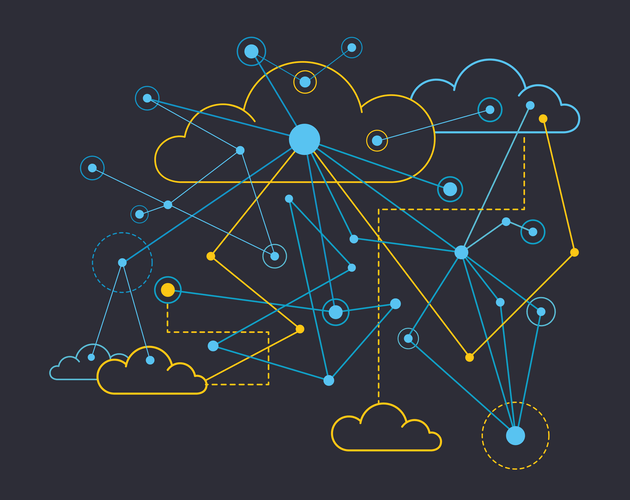If required, one can host their own Docker registries and can use them for pulling images. Lastly, you can also delete images that you no longer need by running docker rmi. This command deletes all containers that have a status of exited.
- This approach is popular because it eliminates the friction between development, QA, and production environments, enabling faster software shipping.
- Docker is mostly favored for Continuous Integration and Continuous Delivery (CI/CD) workflows.
- Once your container is up and running, if you delete your container, you also lose the data.
- By running these servers in independent containers, you can eliminate dependency issues.
- Discover the perfect plan to empower your team and streamline your workflow.
- Docker makes it easy for developers to quickly create, deploy and manage apps on any platform.
Then, when you want to build your software, you can mount your code into the build container, and compile your code. Because each build runs in a fresh instance of the same build container, your builds should run much more predictably. Often, we waste a lot of time installing and configuring the dependencies that we need for our application. Most applications depend on some other component to run – such as a database, or perhaps an API.
Easy to Use
When you create a container using Docker, it will automatically create a set of namespaces and isolate the container. Therefore, a container cannot access or affect processes running inside another container. In addition to resource accounting and limiting, control groups handle the provisioning https://globalcloudteam.com/ of memory, compute and disk I/O resources. Distributed-Denial-of-Service attacks are thus successfully mitigated seeing as a resource-exhausted container cannot crash the system. To build a Java app, you can use the Maven Docker image, which contains the Maven build tool.
However, Docker does not take the place of provisioning or automation tools such as Ansible, SaltStack, and Chef. In addition, Docker has recently announced support for Kubernetes, hinting that Docker Swarm may not be sufficient as a stand-alone cluster manager. All of this being said, it’s important to understand that the underlying hosts may be connected to other components. Therefore, your disaster recovery plan should involve spinning up a replacement host as well. In addition, you should consider things like stateful servers, network and VPN configurations, etc.
UI Design Tools You Should Know About
GE turned to Docker and has since managed to considerably reduce development to deployment time. Moreover, it is now able to achieve higher application density than VMs, which reduces operational costs. The foregoing is especially useful when developers want to test an application in various operating systems and analyze the results. Any discrepancies in code will only affect a single container and therefore won’t crash the entire operating system. To solve this issue, use the “—from-cache” command to instruct Docker build to get the cache from the local machine image. If you don’t have the local existing docker image, you can simply create an image and pull it just before the execution of the “Docker build” command.

The/route renders the main app, thedebugroute is used to return some debug information and finallysearch is used by the app to query elasticsearch. Navigate to the food trucks directory and run docker-compose up. Before we talk about the features Docker provides especially to deal with such scenarios, let’s see if we can figure out a way to get around the problem. Hopefully, this should give you an appreciation for the specific feature that we are going to study. We’ve already built our own Flask container in the previous section.
One-use tools
In case you’re wondering, the -q flag, only returns the numeric IDs and -f filters output based on conditions provided. One last thing that’ll be useful is the –rm flag that can be passed to docker run which automatically deletes the container once it’s exited from. That concludes a whirlwind tour of the mighty docker run command, which would most likely be the command you’ll use most often. It makes sense to spend some time getting comfortable with it.

Although EB has a very intuitive CLI, it does require some setup, and to keep things simple we’ll use the web UI to launch our application. User images are images created and shared by users like you and me. They build on base images and add additional functionality. The image that we are going to use is a single-page website that I’ve already created for the purpose of this demo and hosted on the registry – prakhar1989/static-site.
Infrastructure Solutions: How to Choose the Right DevOps-as-a-Service Partner
To make changes, you’ll create a new image, which may have the same name and tag. Developers can write code, and then ship the application to the test team as a container/Docker image. The test team then runs the container image, and tests the application, without having to follow a complex sequence of steps, configure a server, https://globalcloudteam.com/tech/docker/ or even create a virtual machine. A single container can be versioned using its Dockerfile (we’ll get to images in the next section), so it makes quite easy for one developer to run and maintain a whole ecosystem of containers. On the other hand, you would need an infrastructure person just to be able to run and housekeep VMs.

As Bottomley told me, „Containers gives you instant application portability.” The Docker project promotes itself as „Docker for everyone”. And the reason for this is the ease with which it can be used.
Docker Use Cases 11: Reduce IT/Infrastructure Costs
So that means that when I ran the ES container, it was running in this bridge network. The first thing that we need to do before we deploy our app to AWS is to publish our image on a registry which can be accessed by AWS. The command we just ran used port 5000 for the server inside the container and exposed this externally on port 8888.
3 Ways to Achieve ZeroOps with Docker Swarm – The New Stack
3 Ways to Achieve ZeroOps with Docker Swarm.
Posted: Wed, 03 May 2023 07:00:00 GMT [source]
Most notably, in 2008, LinuXContainers was implemented in the Linux kernel, fully enabling virtualization for a single instance of Linux. While LXC is still used today, newer technologies using the Linux kernel are available. Ubuntu, a modern, open-source Linux operating system, also provides this capability. The term „single-host deployment” refers to the ability to execute everything on a single piece of hardware. And in such circumstances, particularly on a higher or organizational level, frequently result in multiple conflicts and challenges throughout the software development life cycle.
What are Containers?
A lot of companies have migrated over from VMs to containers not only because they’re much lighter and faster to spin up, but also because they’re extremely easy to maintain. In 2016, the first version of Docker for a different OS than Linux was announced. Windocks released a port of Docker’s OSS project designed to run on Windows.
